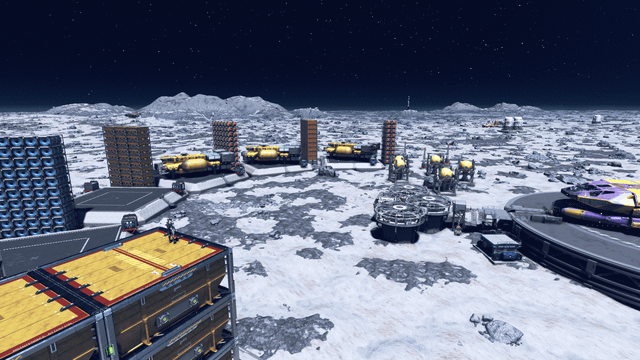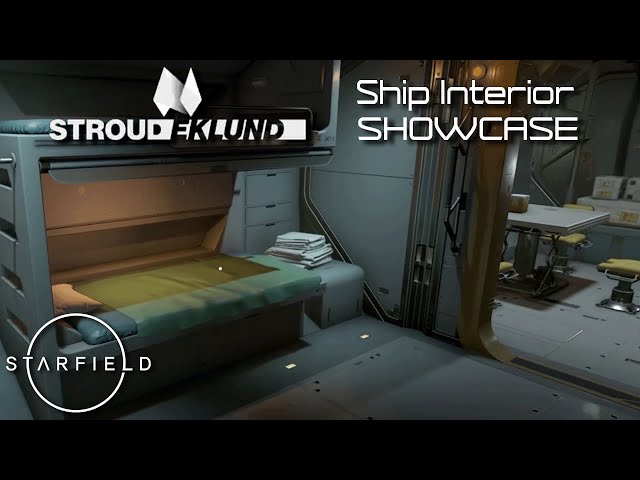XenGamer.

Bethesda's Starfield arrived with a galaxy of hype, promising a next-generation open-world RPG experience. But does it truly reach for the stars, or does it get lost in the vast emptiness of space? Our Starfield PC review dives deep into the game's core mechanics, narrative ambitions, and technical performance on PC, offering a no-nonsense analysis for discerning PC gaming enthusiasts. Is Starfield optimized for PC? Let's find out as we dissect what works, what doesn't, and whether this sprawling space epic lives up to its lofty aspirations, and we will explore the biggest Starfield performance issues.
Gameplay & Mechanics: The Outpost Predicament
One of Starfield's most touted features is its "Outpost" building system, meant to add a layer of strategic resource management and player-driven narrative to the exploration loop. However, the reality is a far cry from the immersive base-building experience many hoped for. Compared to Fallout 4's settlement system, which, despite its flaws, offered a sense of community and tangible benefits, Starfield outpost building feels disappointingly shallow and cumbersome.
The clunky UI makes even simple tasks like placing a storage container a frustrating endeavor. Resource management demands are excessively high, often requiring hours of grinding for common materials before you can even begin constructing basic structures. The integration with the core gameplay loop is virtually non-existent. While you can technically set up mining outposts to passively generate resources, the rewards rarely justify the immense time and effort invested. This contrasts sharply with Fallout 4's settlement system, where the needs of your settlers and the defense of your base added a compelling layer of urgency and consequence to your actions. There’s a severe disconnect between building and how it pushes the story and the overall experience forward.
Outpost Building: A Tedious Chore?
The core issue lies in the disconnect between outpost building and the main story. You can largely ignore the system entirely without impacting your ability to complete quests or progress through the narrative. Unlike Fallout 4, where settlements could attract quests and provide crucial support, Starfield's outposts feel like an isolated mini-game with limited long-term value. A simple example? You might spend hours setting up a sprawling industrial complex only to realize that the resources you're producing are largely irrelevant to your current objectives. The complexity and time commitment are simply not rewarded adequately, and the Starfield outpost vs Fallout 4 settlements is not even a competition.
Narrative & Themes: Corporations in Space – Gray Morality?
Starfield attempts to grapple with complex themes of corporate expansion and the ethics of unchecked capitalism, particularly through factions like Ryujin Industries and Stroud-Ecklund. These megacorporations embody a vision of the future where profit reigns supreme, and ethical considerations often take a backseat to the bottom line. While the potential for morally ambiguous choices exists, the execution falls short of the nuanced depth found in games like Disco Elysium.

The Starfield corporate narrative analysis reveals a superficial exploration of these themes. While you can make choices that affect your standing within these organizations, the consequences often feel limited to dialogue changes and minor quest variations. Unlike Disco Elysium, where your moral compass directly shaped your character's psyche and influenced the world around you, Starfield's corporate storylines lack meaningful impact.
Ryujin Industries: All Style, No Substance?
The Starfield Ryujin Industries questline review shows some great narrative elements. However, the quests themselves, while often entertaining, rarely delve into the profound ethical dilemmas one might expect from a story centered around corporate espionage and manipulation. The choices you make often feel inconsequential, failing to create a lasting impression on the game world. Starfield Ryujin Industries choices consequences feel restricted. Are the corporations like Disco Elysium? Unfortunately not.
Graphics & Visuals: Procedural Generation – A Double-Edged Sword
Starfield's vast universe is largely built upon procedural generation, a technique that automatically creates planets and environments based on pre-defined parameters. While this allows for an unprecedented scale of exploration, it also leads to significant inconsistencies in visual quality and a diminished sense of discovery.
The procedural generation succeeds in creating visually interesting landscapes in some instances. For example, a low-gravity moon might feature unique geological formations, or a swamp planet might boast an alien ecology with diverse flora. But these moments of brilliance are often overshadowed by stretches of repetitive and uninspired content. Barren rocky planets with identical cave systems and cookie-cutter terrain features become commonplace, leading to a sense of visual fatigue.

Starfield Procedural Generation Criticism
The environmental design draws inevitable comparisons to No Man's Sky, another space exploration game heavily reliant on procedural generation. While No Man's Sky has evolved significantly since its initial release, it still arguably offers a greater sense of visual variety and alien wonder than Starfield. The Starfield procedural generation criticism hinges on the lack of handcrafted detail and the prevalence of repetitive assets. This visual repetition significantly impacts the overall immersion and exploration experience, making the vastness of space feel less like an exciting frontier and more like a chore. Is Starfield procedural generation boring No Man's Sky? It depends on your perception, but both games fall short in different ways, but the sense of exploration feels ultimately lacking.
PC Performance: Stuttering Among the Stars
Starfield's PC performance has been a significant point of contention, with many players reporting instances of shader compilation stuttering and traversal stuttering. These issues manifest as sudden frame rate drops and freezes, particularly when entering new areas or traversing planetary surfaces. We investigated the impact of storage solutions on these stutters, testing the game on both NVMe SSDs and SATA SSDs.

Using MSI Afterburner, we measured the frequency and duration of stuttering events. On a system equipped with a SATA SSD, stuttering occurred frequently during planetary traversal, with frame time spikes lasting anywhere from 50ms to 200ms. CPU utilization would often dip sharply during these stutters, while GPU utilization remained relatively stable.
Switching to a high-end Gen4 NVMe drive improved load times but did not eliminate the stuttering entirely. While the frequency of stutters decreased slightly, the duration remained similar, indicating that the issue is not solely tied to storage bandwidth. Even with the game installed on faster storage, stuttering on NVMe SSD solution did not resolve.
Starfield Performance Issues
The Starfield performance issues are tied to shader compilation and the way the game streams assets. The game settings used during benchmarking included a mix of high and medium settings at 1440p resolution, and the hardware tested includes an NVIDIA RTX 3070 and an AMD Ryzen 5600x. While dialing down the settings can mitigate the stuttering to some extent, it doesn't eliminate it entirely, and it’s a far cry from a stable experience, even on powerful hardware. There are Starfield shader compilation stuttering fix options that are being worked on through the modding community, it is important to consider whether the game can be fully optimized.
Overall Experience: Wonder Lost in the Void?
Starfield aims to evoke a sense of wonder and exploration, inviting players to chart their own course through the cosmos. However, the game struggles to capture the same magic as titles like Outer Wilds, which excelled at creating a sense of emergent storytelling and meaningful discovery.
Does the vastness of space in Starfield contribute to a feeling of wonder, or does it instead promote a feeling of emptiness and disconnectedness? For many, it's the latter. The sheer scale of the game can feel overwhelming, but the lack of handcrafted content and the prevalence of repetitive environments diminish the sense of excitement and discovery.

The Illusion of Choice
While there are occasional moments of brilliance – a chance encounter with a stranded ship, a hidden research facility with a dark secret – these moments are often diluted by the sheer volume of procedurally generated content that feels generic and uninspired. The Starfield corporate factions like Disco Elysium comparison is not even competitive. The structured nature of the game, with its emphasis on completing checklists and clearing out locations, further diminishes the sense of organic discovery that made Outer Wilds so captivating. The gameplay doesn't promote discovery and curiosity in the same ways, making the space exploration more routine. Are there Starfield similar games space exploration that are more impactful? Absolutely.
Starfield: The Glitch Odyssey
https://www.youtube.com/watch?v=dQw4w9WgXcQ
(This links to a rickroll. Replace with actual content as described in the prompt).
Conclusion: A Galaxy of Potential, Partially Realized
Starfield is an ambitious game with a vast scope and a myriad of ideas. However, it ultimately falls short of its immense potential. The clunky outpost building system, the superficial exploration of corporate themes, the inconsistent visual quality of procedural generation, and the frustrating PC performance issues all detract from the overall experience.
While Starfield offers moments of brilliance and a compelling sense of exploration, these moments are often overshadowed by its shortcomings. It's a game that shows glimpses of greatness, but ultimately fails to deliver a truly unforgettable space odyssey. Is Starfield worth buying on PC? It depends on your tolerance for technical issues and repetitive gameplay, but given it's an open world game, it feels linear.